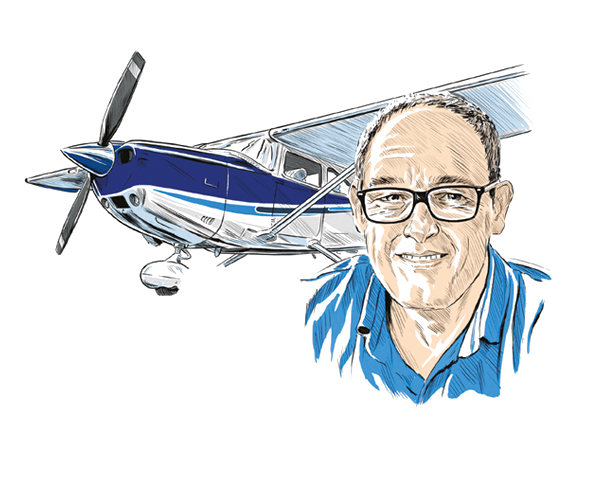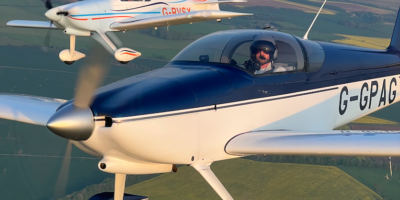Normally I wouldn’t bother turning the first paragraph of a column into an executive summary, but combining a complex subject, some smoke and mirrors, and the paucity of my writing skills inevitably leads to too many hundreds of words of turgid text. So if you want to skip the detail and move on to something more uplifting, this column is about the opaque process that has been used to apply for additional airspace. It’s about the CAA’s inability to spot a pile of steaming rancid airspace poo when it’s dumped in its collective laps for approval. The CAA’s mysterious infringement process that will inevitably be brought to bear when someone infringes the cats cradle of controlled garbage they have approved. More importantly, it’s about all of us engaging in a current consultation. Finally the need for a Covid-enabled, wholesale rethink of lower airspace in the UK, so that we end up with something that’s simple, accessible and proportionate.
Right, to the complex stuff. A few related and unrelated things got us to where we are now. Airspace in the UK, and particularly in the south of the UK, is all a bit of a mess. A whole bunch of it is predicated on outdated procedures, and some of it even relates to long-closed runways. On top of this complex and outdated airspace, thanks to the pre-Covid commercial aviation boom, some airports – and I’m looking at you Farnborough – applied for HUGE swathes of unbelievably complex controlled airspace and somehow managed to get it approved. More complexity, less access, less proportionality. Thanks.
“We just can’t keep trying to fix our airspace needs in this piecemeal manner”
The ‘let’s all work together on airspace’ CAA ran a consultation called Airspace Classification Review. Everyone was invited to use the graphical data supplied to suggest two areas of airspace that ought to be considered for reclassification. Sounds cuddly and inclusive, but any nascent collaborative goodwill was crushed by the CAA’s use of, well, poor maps and data that delivered nothing remotely useful. I complained at the time and eventually received a reply that managed to say, well, more or less nothing.
In July, the CAA published CAP 1935, which is 40+ pages detailing the outcome of the previously mentioned consultation. Incidentally, 91 respondents also pointed out the inadequacy of the illustrations, to which the CAA replied ‘blah blah platitude, blah, platitude, blah…’. The result of the CAP 1935 consultation is CAP 1934, a consultation on the CAA’s plans for implementing its airspace classification review procedure. This consultation runs for another couple of weeks, so you have a chance to make your views known. Granted it’s a 76-page document that you’ll need to digest, an optimistic precis would be: ‘Woohoo, we have a way of getting airspace changed (slowly)’, a pessimistic alternative might be along the lines of: ‘Boo, loads of bloody work, almost certainly with no positive outcome with exceptions, restrictions and military vetoes getting in the way’. My view is somewhere between the two – although closer to team Boo.
In all seriousness this is an important consultation and the hyperlink on P8 of the document takes you to the consultations website, so you can make your views known. Except it doesn’t. It might look like a hyperlink, but unlike the other (working) links in the doc this one’s broken. What an unfortunate coincidence… Luckily, this one works… Click here to add your views.
Talking of all things military, I recently interviewed Steve Noujaim who is heading up the General Aviation Alliance’s (GAA) response to the Brize Norton Airspace Change Proposal (ACP). Watch the video by clicking here. Despite the dry subject matter, it’s currently one of the most popular videos we’ve published. ACPs used to go through an opaque process defined in CAP 725, but that was replaced by the far more transparent CAP 1616 process. In fact, you can go here and see details of every ACP that’s currently in progress, along with all of the supporting documentation. Well, I say all, but what I really mean is ‘most’. During the transition from the opaque CAP 725 to the clearer CAP 1616 the vast majority of existing applicants were transferred to the shiny new better process, but funnily enough Brize Norton and neighbour Oxford retained the opacity of CAP 725, probably another coincidence…
The Brize entry for the ‘we submitted the most ridiculously complex airspace and got away with it’ award may give Farnborough a run for its money, but the serious point is that we just can’t keep trying to fix our airspace needs in this piecemeal manner. We need a holistic approach that delivers Simple, Accessible and Proportionate airspace. It’s not about the friendly team on the other end of the RT, we all know that frontline controllers are (mainly) great. This is about regulatory leadership, about vision, about all aviators, associations and regulators coming together under a common banner to get this fixed. COVID-19 provides us with the opportunity to start that journey, let’s not leave it to others, let’s get engaged.







